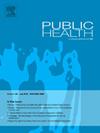实现可持续发展目标3.2消除五岁以下儿童可预防死亡的全球战略:现实主义审查。
IF 3.2
3区 医学
Q1 PUBLIC, ENVIRONMENTAL & OCCUPATIONAL HEALTH
引用次数: 0
摘要
目标:按照目前的趋势,59个国家有可能无法实现到2030年将每活产五岁以下儿童死亡率降至2.5%的可持续发展目标具体目标。本文旨在确定降低五岁以下儿童死亡率和实现可持续发展目标3.2具体目标的有效全球战略。研究设计:采用现实主义综合方法,根据“现实主义和元叙事证据综合:不断发展的标准”(RAMESES)出版标准,系统地回顾文献证据。应用情境-机制-结果(CMO)框架来确定全局战略如何在不同环境下发挥作用。方法:系统检索2000年9月至2024年9月的MEDLINE、Embase和Cochrane数据库,扫描参考文献列表,检索关键论文的引文,确定研究。促进包容的研究描述了有助于到2030年消除五岁以下儿童可预防死亡和实现可持续发展目标3.2具体目标的全球战略。使用标准化表格提取数据,并根据CMO的配置进行分析,以确定、分析和制定有助于消除五岁以下儿童可预防死亡的基于证据的全球战略框架。结果:确定的全球战略围绕三个核心主题:领导力、卫生部门和非卫生部门因素。关键的全球战略领域包括加强治理、对资源和成果问责、以社区为基础的方法以及确定干预措施的优先次序。结论:存在降低五岁以下儿童死亡率的多种全球战略。这一以证据为基础的成功战略综合,利用现实主义原则绘制地图,为世界各地的政策制定者提供了实用指南,以确定不同国家背景下干预措施的优先次序和调整,以加快实现可持续发展目标3.2的进程。本文章由计算机程序翻译,如有差异,请以英文原文为准。
Global strategies to achieve SDG 3.2 for ending preventable deaths of children under-five: A realist review
Objectives
At current trends, 59 countries are at risk of missing the sustainable development goal (SDG) target of bringing the under-five mortality rate to as low as 2.5 % per live birth by 2030. This article aims to identify effective global strategies for reducing under-five mortality and achieving SDG 3.2 targets.
Study design
A realist synthesis method was used to systematically review the literature for evidence in accordance with the “Realist and MEta-narrative Evidence Syntheses: Evolving Standards” (RAMESES) publication standards. The context-mechanism-outcome (CMO) framework was applied to identify how global strategies function across settings.
Methods
Studies were identified through systematic searches of MEDLINE, Embase, and Cochrane databases from September 2000 to September 2024, scanning reference lists, and citation searching of key papers. Studies for inclusion described global strategies that contribute to ending preventable deaths in children under-five and achieving SDG 3.2 targets by 2030. Data were extracted using standardised forms and analysed for CMO configurations to identify, analyse, and produce an evidence-based framework of global strategies that contribute to ending preventable deaths in children under-five.
Results
Global strategies identified revolved around three core themes: leadership, health sector, and non-health sector factors. Key global strategic areas included increased governance, accountability for resources and results, community-based approaches, and prioritisation of interventions.
Conclusion
Multiple global strategies to reduce under-five mortality exist. This evidence-based synthesis of successful strategies, mapped using realist principles, provides a practical guide for policymakers worldwide to prioritise and adapt interventions across diverse country settings to accelerate progress towards achieving SDG 3.2.
求助全文
通过发布文献求助,成功后即可免费获取论文全文。
去求助
来源期刊

Public Health
医学-公共卫生、环境卫生与职业卫生
CiteScore
7.60
自引率
0.00%
发文量
280
审稿时长
37 days
期刊介绍:
Public Health is an international, multidisciplinary peer-reviewed journal. It publishes original papers, reviews and short reports on all aspects of the science, philosophy, and practice of public health.
 求助内容:
求助内容: 应助结果提醒方式:
应助结果提醒方式:


